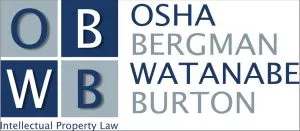In what has to rank as one of the most anti-patent owner decisions of the U.S. Court of Appeals for the Federal Circuit in recent years, the court held that “IPR estoppel does not preclude a [failed IPR] petitioner from relying on the same patents and printed publications as evidence in asserting a ground [of invalidity at a subsequent district court trial] that could not be raised during the IPR.”1 In resolving a sharp split of district court authority on the scope of Inter Partes Review (IPR) estoppel under 35 U.S.C. § 315(e)(2) in favor of accused infringers and patent validity challengers, the Federal Circuit has again substantially devalued patents and the intellectual property of all patent owners.2 Some new ways to “game the system” created and approved by the court in Ingenico are all too easily seen, while clever counsel representing accused infringers will surely conjure others not immediately apparent.
IOENGINE sued PayPal Holdings for patent infringement in 2018. Because Ingenico supplied PayPal's accused products, Ingenico filed a declaratory judgment action against IOENGINE seeking to invalidate the patents-in-suit. Later (but still within the statutory period for doing so, and long before trial), Ingenico filed petitions for IPR seeking to invalidate IOGENGINE's patents in administrative proceedings before the Patent Trial and Appeal Board (PTAB) of the U.S. Patent and Trademark Office. Most but not all of the claims of the patents were held to be unpatentable in final written decisions of the PTAB.
Returning to the district court, Ingenico again challenged validity of those claims of the IOENGINE patents that had survived the IPRs. The challenge was based on Readme instructions and screen shots of the Firmware Upgrader component of a software system called DiskOnKey, which instructions and screen shots Ingenico proved were accessible to the public prior to critical date of IOENGINE's patents. Crucially, the Readme instructions and screen shots constituted printed publications under U.S. patent law.
IOENGINE sought to preclude Ingenico, which had already lost (in part) its IPR challenges in the PTAB, from asserting patent invalidity based on printed publications which Ingenico could have raised in those IPRs as evidence in a validity challenge based on “public use” of the invention. The IPR estoppel provision of the statute states, in pertinent part: “The petitioner in an inter partes review of a claim in a patent under this chapter that results in a final written decision … may not assert … in a civil action … that the claim is invalid on any ground that the petitioner raised or reasonably could have raised during that inter partes review.”3 The district court denied IOENGINE's request for preclusion. The jury found the remaining claims of IOENGINE's patents invalid. The Federal Circuit has now affirmed the trial court's denial of IOENGINE's estoppel request and the jury's verdict of patent invalidity.
The court stated that whether Ingenico should have been estopped depends on the proper interpretation of the term “ground” used in 35 U.S.C. § 315(e)(2), noting that this was a question of first impression for the appellate court and that there was a split among district courts about its proper interpretation. The Patent Act does not expressly define “ground” however, and the split of authority at the trial court level seems to prove that § 315(e)(2) is ambiguous, at best.
Pointing to a different section of the statute authorizing IPRs, the Federal Circuit noted that petitioners are limited to raising challenges under Sections 102 (novelty) and/or 103 (nonobviousness) based on patents and/or printed publications. While undoubtedly correct, this point utterly and completely fails to address whether Ingenico could have challenged IOENGINE's patents under Sections 102 and/or 103 in its IPRs relying solely or even only in part on the Readme instructions and screen shots of the Firmware Upgrader component of the DiskOnKey software system.
Next, the Federal Circuit explained that “a ground is not the prior art asserted during an IPR” and that “while patents and printed publications are evidence that support a ground that the claimed invention was patented or described in a printed publication, they are not coextensive with a ground.” There are at least two flaws in this rationale.
The first and most obvious flaw is that the Federal Circuit presumed a definition of “ground” which the court itself had just pointed out is missing from the Patent Act. Thus, the Federal Circuit relied on its own just-reached conclusion about what a “ground” is to make this point -- a classic example of circular reasoning.
Second, the court invoked Congressional intent, or at least what it presumed to be the intent of Congress: “In drafting 35 U.S.C. § 315(e)(2), Congress could have precluded petitioners from asserting in district court that the claim is invalid on any prior art that the petitioner raised or reasonably could have raised during that inter partes review, but Congress chose not to. Instead, Congress precluded petitioners from asserting grounds in district court.” Really? Again, only by first defining “ground” as the court did could this conclusion be drawn – more circular reasoning. More important is what it implies that Congress actually did intend, which according to the Federal Circuit is something like this: “An unsuccessful IPR petitioner who challenges patent validity based on printed publications and patents relating to a prior art product is free to return to district court to relitigate validity of the very same claims of the very same patents based on the very same printed publications and patents so long as he ALSO includes an invoice showing at least a single sale (or offer for sale) of that prior art product.” To merely say this aloud is to demonstrate the absurdity of the Federal Circuit's holding. Congress could not possibly have so intended, when the actual purposes as expressed by Congress and acknowledged in numerous Supreme Court and indeed in other Federal Circuit decisions include, among other objectives: improving patent quality by providing a more efficient means to adjudicate patent validity issues; providing validity adjudication procedures that are often more advantageous than federal court litigation in that they are faster, cheaper, and use a lower standard of proof; providing administrative procedures that are more streamlined than civil litigation, with average legal costs typically in the hundreds of thousands of dollars (as opposed to millions).
The Federal Circuit's Ingenico holding turns Congressional intent on its head. Now, nearly every infringer will “get two bites at the invalidity apple” and it will, in fact, be the very same apple! In the IPR the “ground” will be obviousness based on Patent A + Printed Publication B, and later in the district court litigation the invalidity contention will be obviousness based on Patent A + Printed Publication B + Invoice C, which is all identically the same preexisting technology in both the IPR and district court proceedings. Far from streamlining patent disputes, the Ingenico decision multiplies them. Rather than reducing the time and cost of patent disputes, this Federal Circuit decision likewise multiplies both. Moreover, while many trial courts have, until now anyway, stayed civil litigation pending the outcome of IPR proceedings, the Ingenico decision substantially eliminates any real hope that a trial will be simplified much, if at all, when the losing IPR petitioner can present essentially the same technological challenge again to a jury, exactly as Ingenico did at trial.
Prior to being appointed as Circuit Judge of the Court of Appeals for the Federal Circuit, U.S. District Judge (D.Del.) Leonard Stark wrote one of the more widely-cited district court opinions holding that IPR estoppel should preclude unsuccessful IPR petitioners from subsequently raising invalidity defenses in civil trials based on sales or public use of products which are completely described in patents and printed publications that could have been asserted or even were asserted in those unsuccessful IPRs. Judge Stark acknowledged that the statutory language was ambiguous and agreed that both views of the statutory scheme were reasonable. Also agreeing that a “ground” is not “evidence,” Judge Stark held that the better understanding of Section 315(e)(2) was that a petitioner is precluded from asserting in civil litigation the same “grounds” as were asserted in the IPR “even if the evidence used to support those grounds was not available to be used in the IPR.” The Federal Circuit panel that decided Ingenico did not include Circuit Judge Stark, and reached its contrary conclusion only by the circular reasoning it used to define “ground.” Clearly there is some disagreement among the circuit judges; perhaps the case will be accepted for en banc review. Patent owners hope so.
Footnotes
1. Ingenico Inc. v. IOENGINE, LLC, --- F.4th ---, 2025 WL 1318188 (Fed. Cir. May 7, 2025).
2. The views expressed here are the author's alone and do not necessarily reflect the views of anyone else, including Osha Bergman Watanabe & Burton LLP.
3. 35 U.S.C. § 315(e)(2).
The content of this article is intended to provide a general guide to the subject matter. Specialist advice should be sought about your specific circumstances.


